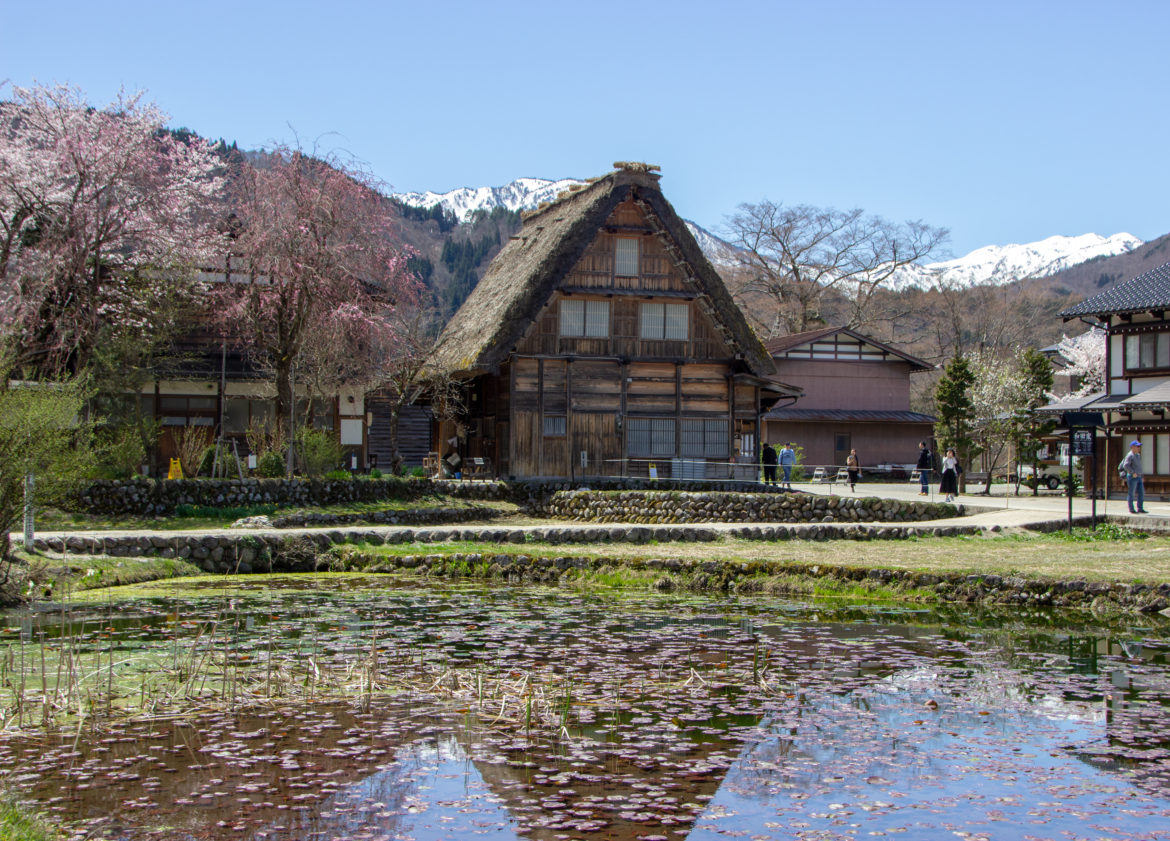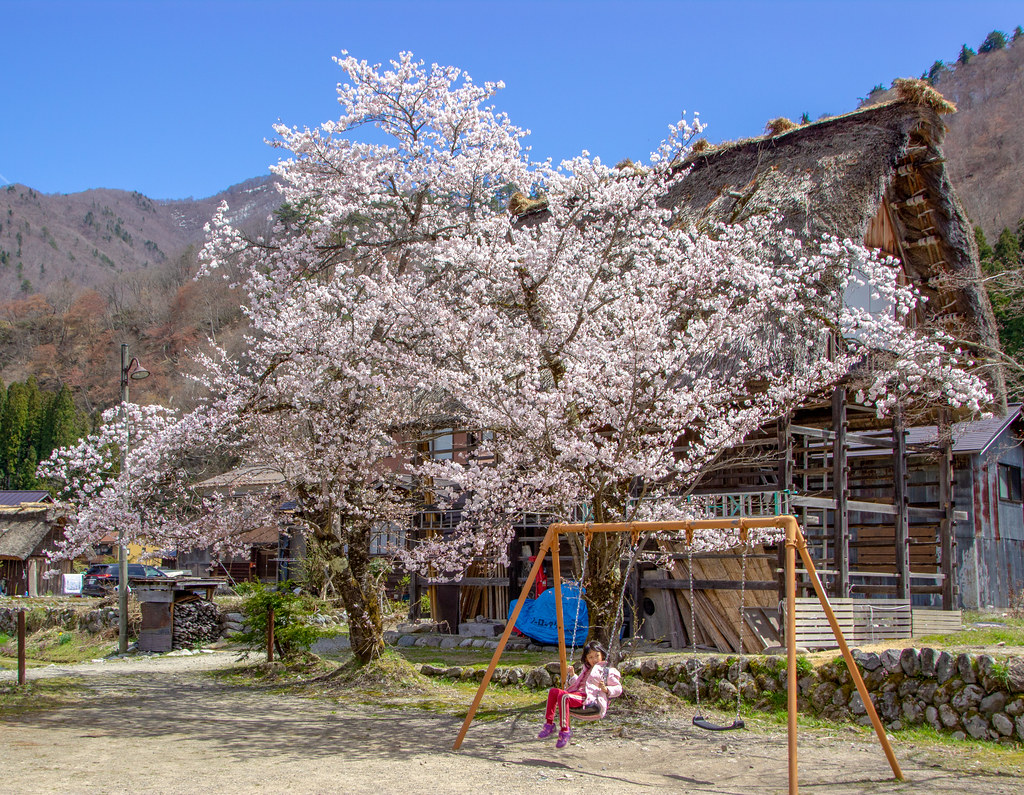Nestled in the Japanese Alps, visiting Shirakawa Village is like stepping into a storybook. Approaching by road, I feel myself slipping into a dream. It no longer feels like the “Land of the Rising Sun.” Rather, it seems like somehow I mysteriously ended up in Switzerland. The snow-capped mountains overlap into the clear blue sky like a surreal painting to immerse my imagination in an alpine setting. Intrigued, I arrive to spend a day and discover the Shirakawa Japan highlights. Plus, I am there in April when the cherry blossoms are in bloom for Sakura Season.
Shirakawa is surrounded by the Ryohaku Mountains in the Shogawa River valley. Moreover, it’s best known for its unique buildings called Gassho-zukuri. The design of these A-framed, thick-thatched roofs, manages snow, as this region is the snowiest area in Japan. Initially, I just inhale the fresh alpine air from the valley, surrounded by beautiful mountains. Then, calmly, I begin exploring this charming village, noticing pink cherry blossoms in full bloom, knowing this is going to be a splendid spring day.
Firstly, from the Visitor’s Center, I cross the hanging bridge over the Shogawa River to the village. The main attraction here is the village itself and its harmonious setting, with the best way to explore being on foot, which is my favorite as an inquisitive peripatetic. Plus, the village is small and easy to explore, where I wander through the labyrinth of scenery, such as, unique buildings, gardens, colorful scarecrows, shops, shrines and cherry blossoms…
Shirakawa Japan Highlights
Shirakawa-go is the largest concentration of Gassho-zukuri buildings in Japan used originally as farmhouses. There are over 110 houses with some being over 250 years old. Moreover, the A-framed thick straw roofs withstand the heavy snow of the region. Gassho-zukuri means ‘constructed like hands in prayer,’ as the farmhouses steep thatched roofs look like the hands of Buddhist monks in prayer. In addition, the A-framed roofs (made without nails) provided large attics used for cultivating silkworms.
Even though most of the buildings have been converted to museums, I still enjoy the setting for its rich cultural experience to feel what it was like to live this unique lifestyle hundreds of years ago.
Panoramic Viewpoint
I inquisitively wander without much of a plan, except to just take it all in. The cherry blossoms are a beautiful accent to the rustic charm. But, the unfortunate reality is the touristy crowds (cannot complain because I’m one too). However, it’s vast enough to not feel overwhelmed by the crowds. Then, I take the 15-minute walk to the hilltop’s panoramic view, where the Shiroyama Tenbodai Castle was at one time.
From this vantage point, I see the cherry-blossom framed, snow-capped mountains and the picturesque village in the valley below, along the winding turquoise Shokawa River. Moreover, Mt Hakusan looms at the highest elevation of 2,172 meters, known as a sacred summit for centuries. Consequently, I easily imagine living here 200 years ago, as a farmer connected to the land and its surroundings living in harmony with Mother Earth.
Then, I continue tirelessly wandering throughout this idyllic village with no agenda. Visitors rent the old farmhouses and offer extended stays to experience the essence of this valley, which is presumably more evident in the early morning and evenings with less tourist crowds. Finally, after 2 Matcha (green tea) ice cream cones and 4 hours of wandering, I meander back across the bridge leaving the village, feeling myself slowly transition out of this nostalgic dreamworld, back into the reality of modern Japan…taking with me a splendid memory of this unique Japanese heritage. Sayonara Shirakawa!
Read More!
MY LIFE-CHANGING CHERRY BLOSSOM TOURS IN JAPAN AND CORRESPONDENCES TO BUDDHISM
A Healing Experience at Kagoshima’s Unique, Geothermal Sand Spas







